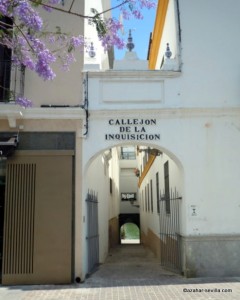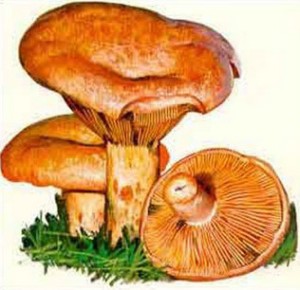 Visitors to Sevilla are usually surprised and even amused to come across “inquisition alley” in Triana for the first time, and will often make the usual Monty Python Spanish Inquisition jokes, but of course the sobering reality is far from anything amusing.
Visitors to Sevilla are usually surprised and even amused to come across “inquisition alley” in Triana for the first time, and will often make the usual Monty Python Spanish Inquisition jokes, but of course the sobering reality is far from anything amusing.
For almost three hundred years (1481 – 1785) the Castillo de San Jorge was the Seat of the Holy Inquisition in Spain where thousands of men and women from all walks of life were imprisoned and tortured. Its sinister image became the iconic symbol for the Inquisition throughout Europe.
In 1990 the city of Sevilla began work on renovating the old Triana Market and unearthed the remains of the castle. Today it stands as a monument to tolerance and calls itself a place for reflection, inviting us to remember the past in order to prevent such totalitarian abuse of power happening again.
 The exhibit is distributed over two floors and includes an interactive room containing three spaces (Value Judgements, The Abuse of Power, The Victims), artefacts from the castle, archaeological remains and historical data.
The exhibit is distributed over two floors and includes an interactive room containing three spaces (Value Judgements, The Abuse of Power, The Victims), artefacts from the castle, archaeological remains and historical data.
There is also a Gallery of Key Figures that pays homage to some of the most representative figures of the Inquisition.
I finally stopped by for a visit yesterday (it opened this past spring) and found it very well done and even inspirational. The info pamphlet says that “You are the main protagonist of this story. This is your history” and goes on to explain that the essential aim of the exhibit is to transfer the lessons learnt from these historical facts to the motivations and concerns of our present day society. All the written information is displayed in both Spanish and English and admission is free.
 [click to enlarge collage]
[click to enlarge collage]
Castillo de San Jorge
Monday-Friday 10.00-14.00h / 17.00-19.00h
Saturday, Sunday & holidays 10.00-15.00h
Castillo de San Jorge Blog

 The Setas (how can you not call them that?) are on the original site of the Encarnación Market which was levelled and moved to a “temporary” site next door … about 35 years ago. I don’t know the whole story there other than the original site was pretty much a parking lot when I first moved to Sevilla in 1993, then they started digging it up and discovered ruins that held up any building for several years. And then they started constructing The Setas.
The Setas (how can you not call them that?) are on the original site of the Encarnación Market which was levelled and moved to a “temporary” site next door … about 35 years ago. I don’t know the whole story there other than the original site was pretty much a parking lot when I first moved to Sevilla in 1993, then they started digging it up and discovered ruins that held up any building for several years. And then they started constructing The Setas.


